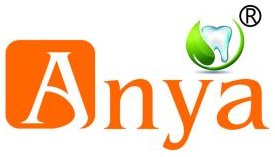A Guide to Understanding Dental Hand Instruments
As a dental professional or student, you are no stranger to the importance of dental hand instruments. These tools are essential in performing a variety of dental procedures, including extractions, fillings, and cleanings. However, with so many different types of dental hand instruments available, it can be overwhelming to understand what each one is used for and how to properly use them. That's where this guide comes in. In this article, we will explore the different types of dental hand instruments, their uses, and how to properly use and care for them.
A: An excavator is used to remove decayed or damaged tooth material, while a chisel is used to shape and contour restorative materials such as fillings.
Q: How often should dental hand instruments be sterilized?
A: Dental hand instruments should be sterilized after each use.
Q: Can damaged dental hand instruments be repaired?
A: Yes, damaged dental hand instruments can often be repaired. It is important to have them repaired as soon as possible to prevent further damage or injury.
Types of Dental Hand Instruments
Examination Instruments
These instruments are used during oral examinations to help dentists and hygienists better examine a patient's teeth, gums, and other oral structures. Some examples of examination instruments include mouth mirrors, probes, and explorers.Restorative Instruments
These instruments are used during restorative procedures such as fillings, crowns, and bridges. Examples of restorative instruments include excavators, chisels, and pluggers.Surgical Instruments
These instruments are used during surgical procedures such as extractions and implant placements. Examples of surgical instruments include forceps, elevators, and bone files.Periodontal Instruments
These instruments are used during periodontal procedures such as scaling and root planing. Examples of periodontal instruments include scalers, curettes, and periodontal knives.How to Properly Use and Care for Dental Hand Instruments
Sterilization
It is essential to properly sterilize dental hand instruments after each use to prevent the spread of infections. Sterilization can be achieved through autoclaving, chemical disinfection, or dry heat sterilization.Maintenance
Dental hand instruments should be inspected regularly for any signs of wear and tear or damage. Damaged instruments should be repaired or replaced immediately.Proper Technique
Using the proper technique when using dental hand instruments is crucial to ensuring a successful procedure and minimizing the risk of injury to the patient or dental professional. It is important to receive proper training and practice before using any dental hand instrument.FAQs
Q: What is the difference between an excavator and a chisel?A: An excavator is used to remove decayed or damaged tooth material, while a chisel is used to shape and contour restorative materials such as fillings.
Q: How often should dental hand instruments be sterilized?
A: Dental hand instruments should be sterilized after each use.
Q: Can damaged dental hand instruments be repaired?
A: Yes, damaged dental hand instruments can often be repaired. It is important to have them repaired as soon as possible to prevent further damage or injury.

